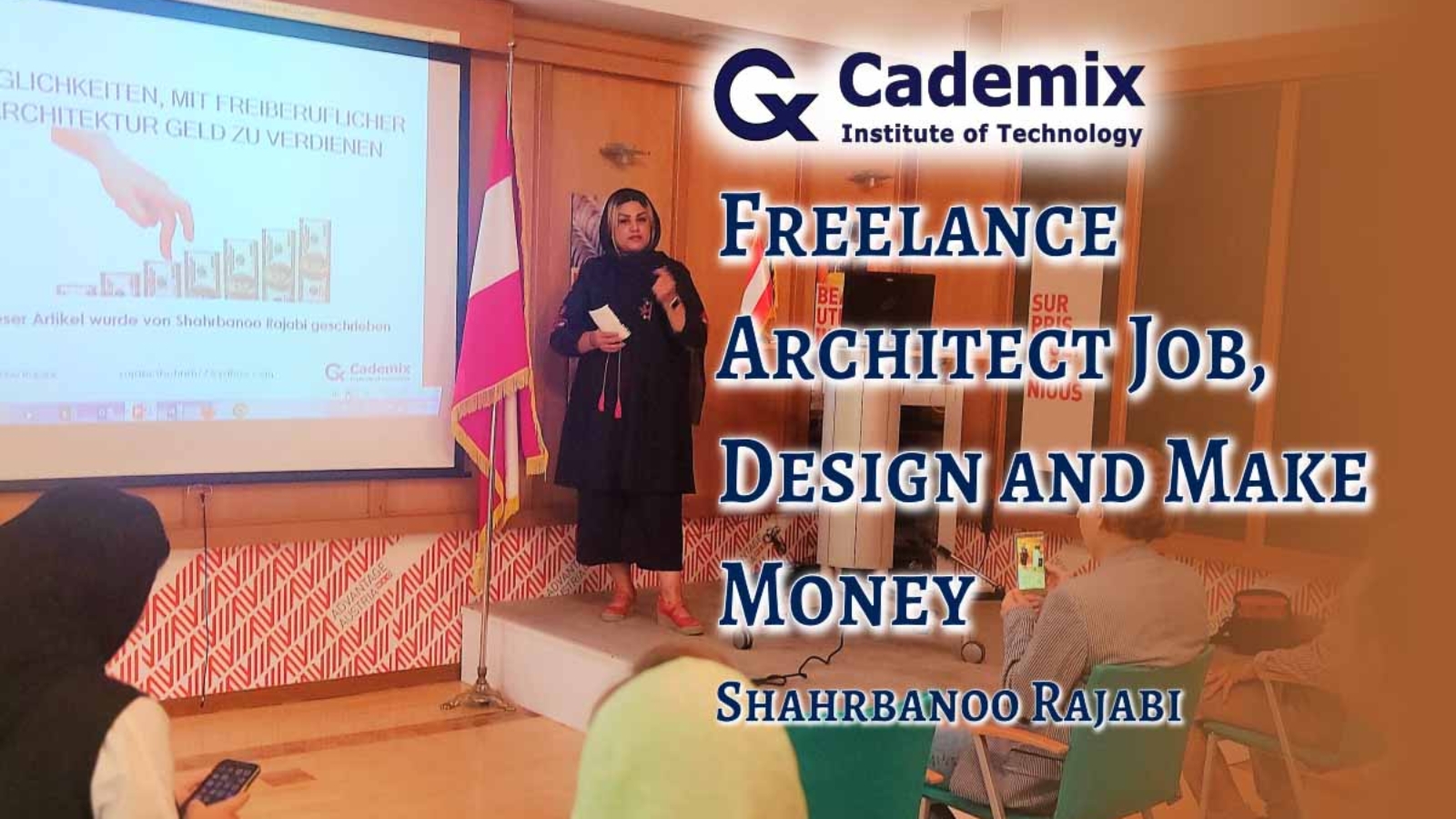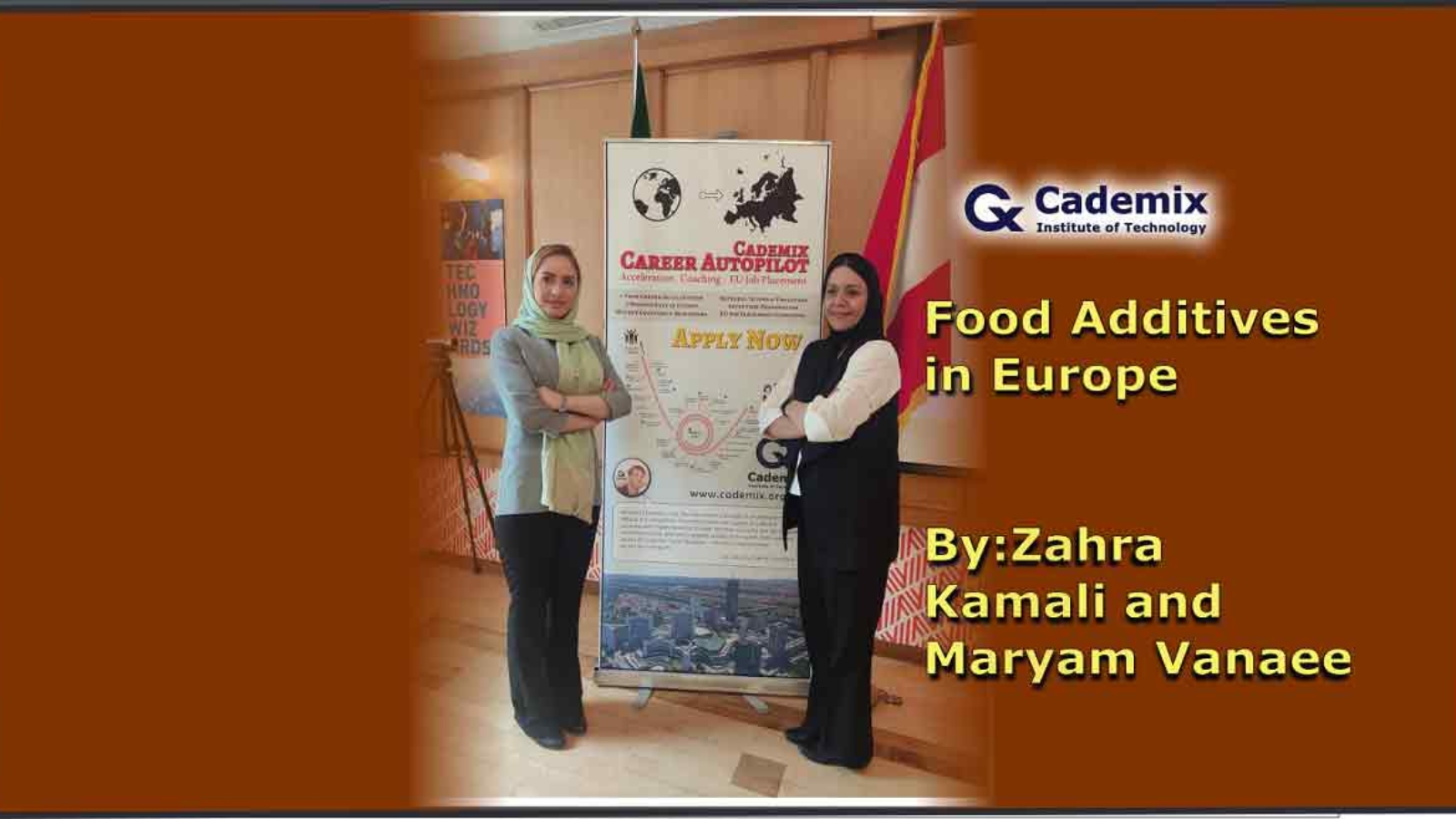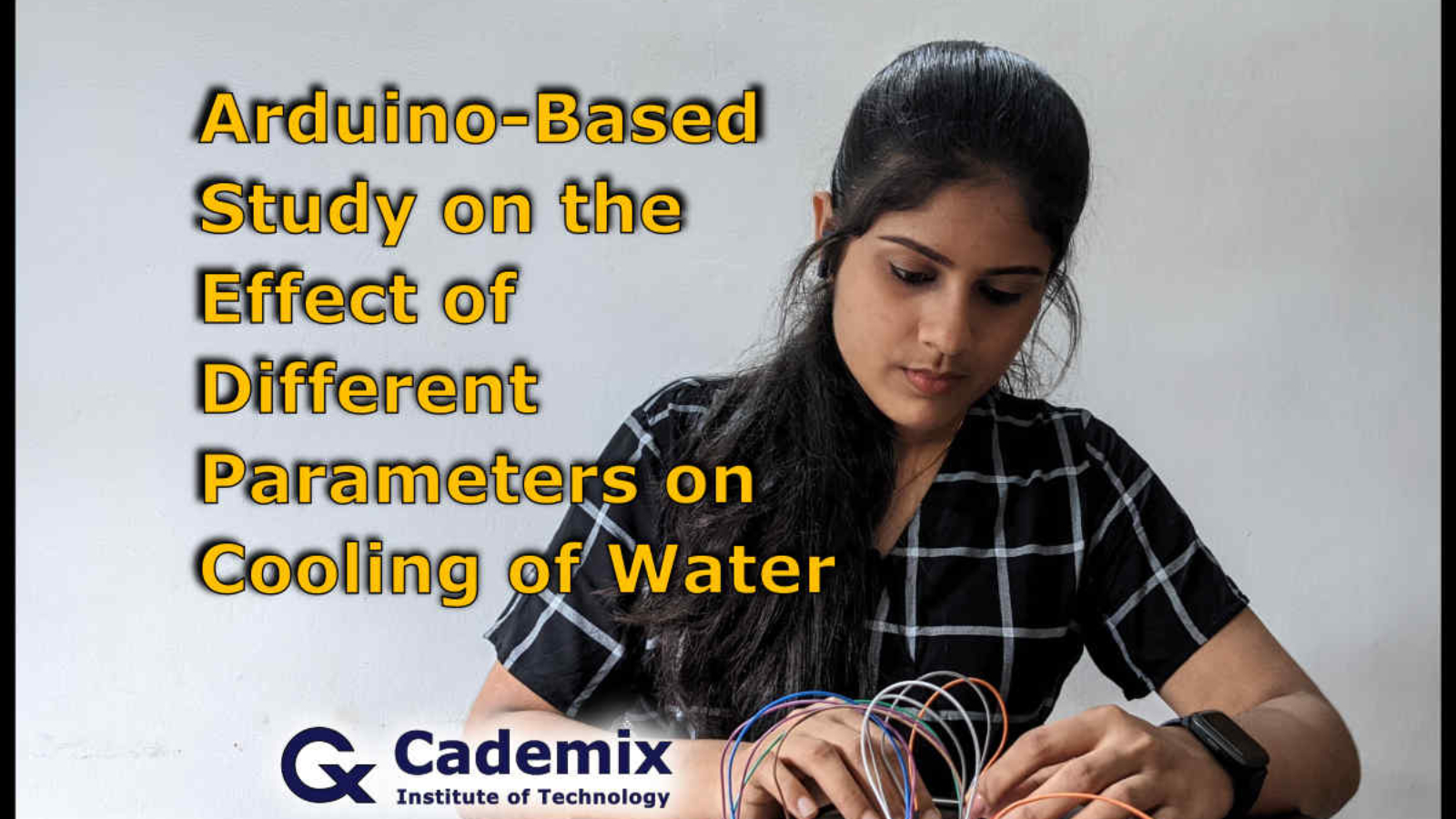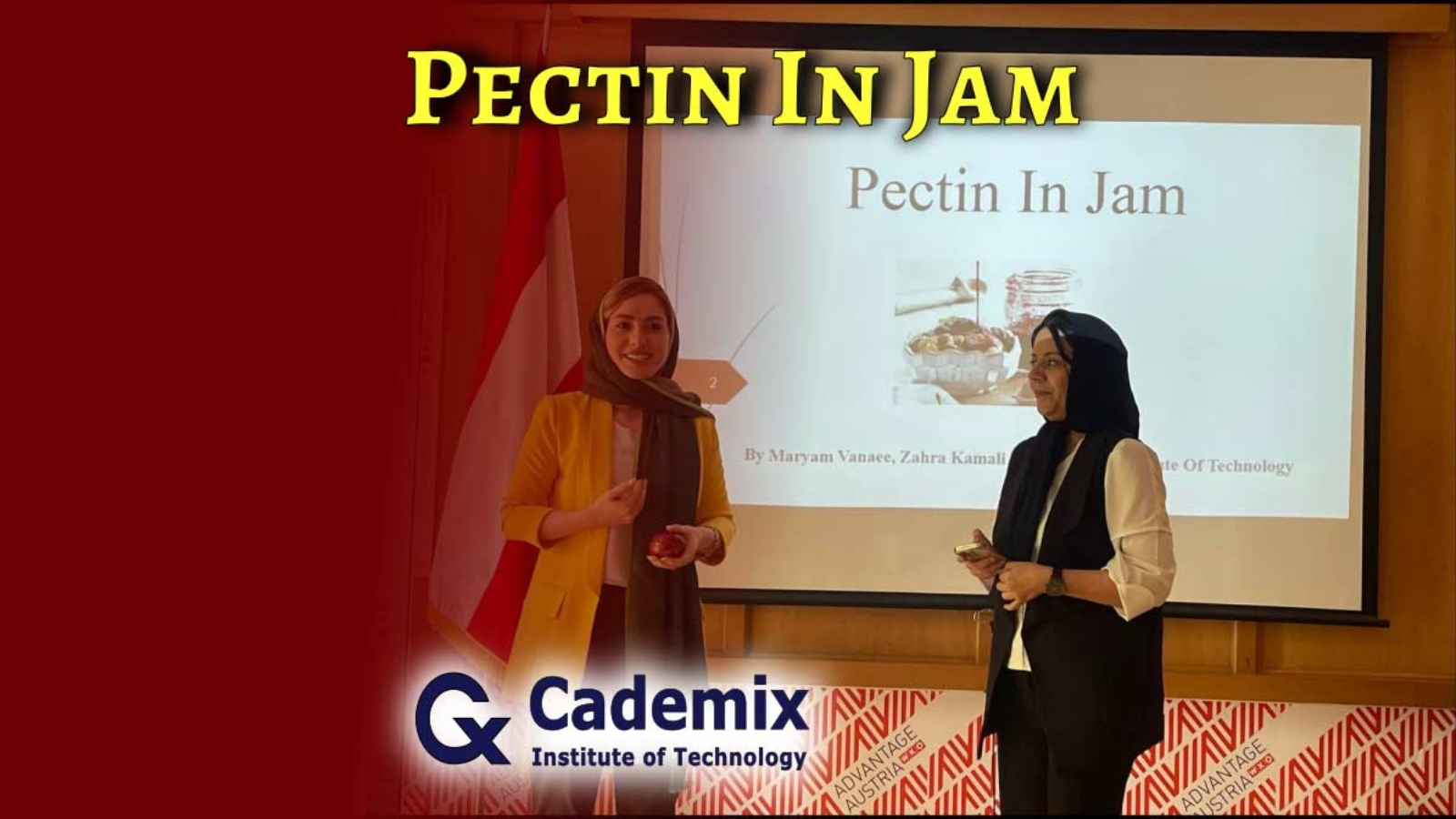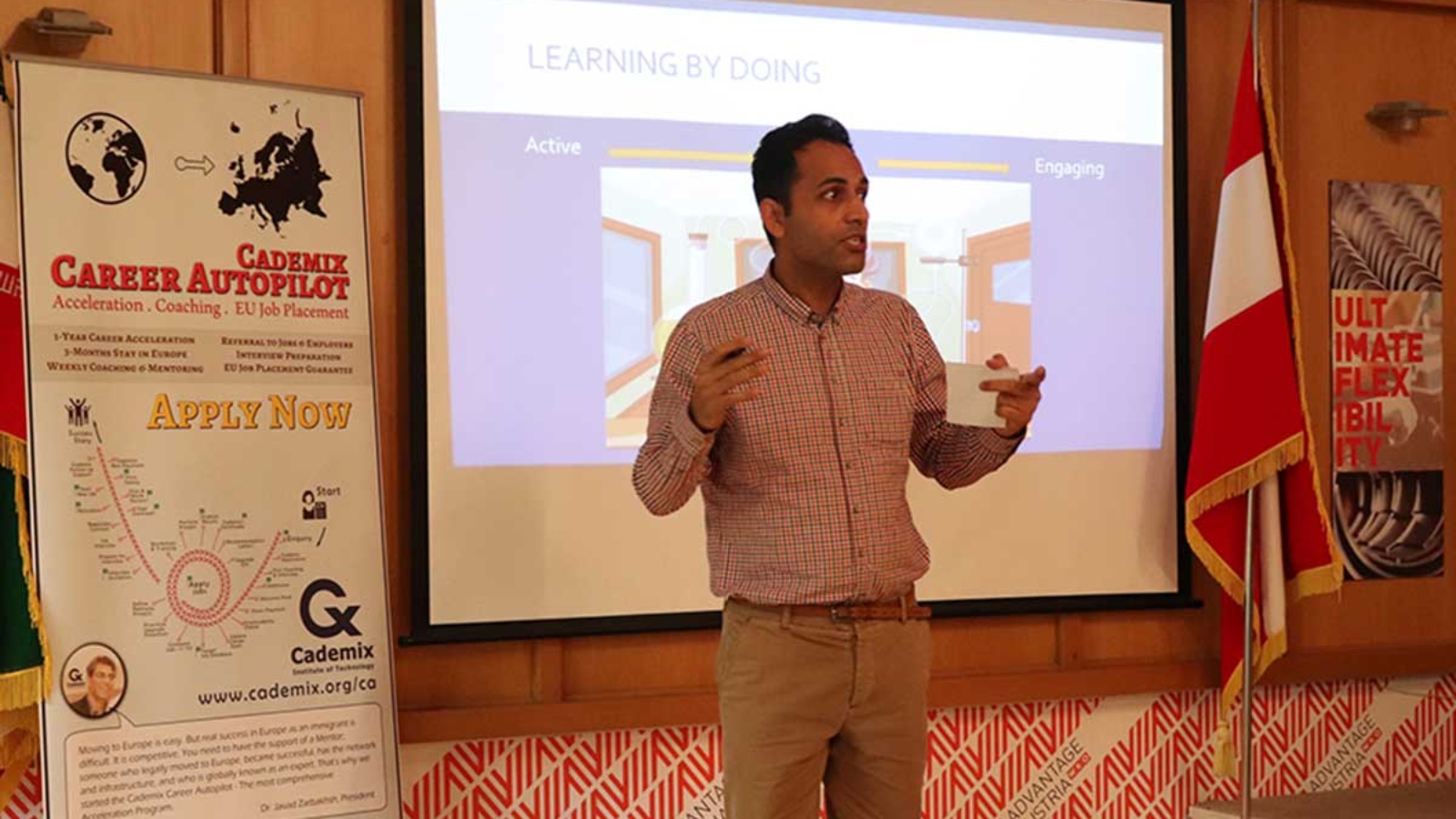Estimated Reading Time: 9 minutesIn this article we will review heterogeneous catalysis and its applications in chemical industry. Catalysis is the phenomenon in which a material known as the catalyst speeds up the pace of a chemical process. The majority of catalytic reactions are heterogeneous. Heterogeneous catalysts have intrinsic benefits over homogeneous catalysts. It is due to their ease of production, handling, separation from the reaction mixture, recovery, and reuse, as well as their stability, low cost, and low toxicity. This review will assist you in gaining fundamental knowledge of heterogeneous catalysis.
Freelance Architect Job, Design and Make Money
Estimated Reading Time: 11 minutesA freelance architect job is where a freelancer works on a project for clients and companies from anywhere in the world and make money. In compare to normal job offers, a freelancer is not employed by the clients. Are you a self-employed architect? Are you an architectural student or a fresh artist planning to enter your own freelance architect job? In this post, you will discover that if you truly want to spend a substantial portion of your spare time doing anything creative, you may instantly use your newly gained talents to start making money independently from typical work in a studio. Being an architect entails a lot of responsibility it is entirely up to you to establish your own firm as a freelance architect and start earning money with your expertise. In this article, virtual scenes and architectural projects designed by Shahrbanoo Rajabi as a freelance architect from Cademix Institute of Technology are presented.
By Shahrbanoo Rajabi, Cademix Institute of Technology.
Food Additives in Europe
Estimated Reading Time: 6 minutesIn this article, we studied the history and regulation of food additives in Europe. What are Food Additives?…Why Food Additives used?…How are Food Additives regulated in Europe?
Bridging Academia and Industry: Why Current Education Models Fall Short
This article explores the persistent gap and bridging academia and industry, emphasizing the challenges graduates face in transitioning from theoretical knowledge to practical applications. It highlights barriers such as limited collaboration, cultural differences for international job seekers, and misconceptions about career pathways. Drawing on categorized case studies, the article critiques existing education models and proposes initial frameworks for bridging this divide through integrated curricula, long-term internships, global mobility programs, and expanded networking opportunities. By fostering collaboration and aligning academic and industrial goals, the article advocates for a reimagined education system that empowers graduates to thrive in the modern workforce.
Dr. Javad Zarbakhsh, Cademix Institute of Technology, Austria
Table of Contents
Introduction
In today’s rapidly evolving global economy, the relationship between academia and industry is under intense scrutiny. Universities and research institutions, traditionally viewed as hubs of innovation and intellectual growth, are expected to produce graduates who can seamlessly transition into the workforce. Industries, on the other hand, are seen as drivers of economic prosperity and technological advancement, demanding a workforce equipped with practical skills and innovative thinking. However, a well-documented disconnect persists between these two critical sectors, as noted by studies such as those by Perkmann et al. (2013) and Subotnik et al. (2021). Despite their interdependence, academic institutions often prioritize theoretical knowledge and publications, while industries focus on immediate practical outcomes and profitability.
This gap has significant implications for graduates, particularly those with advanced degrees like PhDs. Research by Sauermann and Roach (2012) highlights the difficulty PhD holders face in finding industry roles that align with their expertise. Many graduates report a lack of preparedness for industrial demands, citing limited exposure to real-world applications during their academic training. These challenges are compounded for international job seekers, who must navigate cultural, linguistic, and systemic differences on top of these broader issues.
The situation is exacerbated by the growing complexity of global industries, which require interdisciplinary and cross-cultural competencies often missing from traditional education models. Studies such as those by Borrell-Damian et al. (2010) point to the need for greater collaboration between universities and industries to better align academic curricula with market demands. Yet, existing collaborations are often superficial or short-lived, lacking the depth needed to produce sustained impact.
This article delves into the roots of this academic-industrial gap, exploring challenges faced by graduates and international job seekers while offering a critical analysis of categorized case studies. By examining both the systemic barriers and the existing attempts at bridging the divide, the article proposes an initial framework for fostering more effective collaboration, setting the stage for sustainable solutions that address the needs of a globalized workforce.

The Growing Divide
The disconnect between academia and industry is not a new phenomenon but has gained prominence as industries increasingly demand practical, interdisciplinary, and global skills. Universities, by contrast, often emphasize theoretical rigor and academic contributions. This divergence can lead to graduates who are experts in their fields but lack the practical skills or industrial mindset required to thrive outside of academia.
For example, in fields like artificial intelligence, biotechnology, and engineering, students may spend years mastering theoretical frameworks without exposure to the tools or workflows common in industry. The result is a workforce that struggles to apply its academic knowledge to solve real-world problems, creating frustration for both employers and graduates.
Challenges Faced by International Job Seekers
For international students and graduates, the academic-industrial gap is even more daunting. Many aspire to gain global experience, seeking opportunities in Europe, North America, or other economically advanced regions. However, they often face a unique set of challenges that compound the already difficult transition from academia to industry.
One significant issue is the recognition—or lack thereof—of international credentials. Employers in host countries may undervalue degrees from institutions they are unfamiliar with, even when those institutions are highly regarded in their home countries. This creates an uneven playing field, where international graduates must work harder to prove their qualifications.
Cultural and communication barriers further complicate the process. Professional norms, workplace etiquette, and expectations can vary widely across regions. For instance, hierarchical workplace structures common in some countries may clash with the more collaborative and flat hierarchies of Western organizations. International graduates must not only adapt to these differences but also demonstrate their value in environments where they may initially feel out of place.
Networking is another critical hurdle. While domestic students often benefit from established networks of alumni, internships, and local mentors, international graduates may lack these connections, making it harder to learn about job opportunities or secure referrals. Combined with visa and work authorization issues, these barriers can make the path to industry employment feel insurmountable.
Insights from Case Studies: Patterns of Success and Failure
Understanding the academic-industrial gap requires a close examination of past efforts to bridge it. While specific examples vary, common patterns emerge that provide valuable insights. For instance, some partnerships between universities and industries are largely unidirectional. In these cases, academic research informs industrial practices, but industries have little say in shaping academic curricula. This imbalance limits the potential for true collaboration and leaves students without exposure to industry needs.
Short-term internships are another common approach, offering students brief stints in industrial settings. While these internships can provide valuable insights, they often lack depth and continuity, reducing their overall impact. Internships integrated into academic programs, with clear objectives and feedback mechanisms, tend to yield better results.
There are also examples of industry-funded academic research. While these initiatives provide resources and visibility, they sometimes fall short in exposing students to the realities of industrial workflows. In these cases, projects conducted within academic environments may mirror theoretical approaches rather than practical, hands-on problem-solving.
The most promising models involve direct engagement with industry professionals. Programs where industry experts serve as guest lecturers, co-supervisors, or mentors offer students a dual perspective. This approach not only prepares students for industrial careers but also helps them differentiate between academic and industrial cultures.
Misconceptions and Missed Opportunities
The challenges faced by graduates are compounded by pervasive misconceptions about academia and industry. For many students, the pathway from academic success to industrial employment seems straightforward: excel in school, obtain a degree, and secure a job. Yet the reality is far more complex, often requiring strategic planning, adaptability, and additional skill development.
Another misconception is that a prestigious degree guarantees career success. While academic pedigree can open doors, employers increasingly prioritize practical experience, problem-solving abilities, and interpersonal skills. The lack of emphasis on these attributes in traditional education models leaves many graduates unprepared for the competitive job market.
Global career pathways are another area rife with misunderstandings. Students often assume that strategies for success are universal, yet each region has its own unique expectations and challenges. Graduates who fail to tailor their approach to specific markets may find themselves at a disadvantage.
Toward a Better Future: Proposing Initial Solutions
Addressing the academic-industrial gap requires rethinking how education is structured and delivered. One promising approach is to embed practical, interdisciplinary experiences into academic programs. For instance, curricula could be co-designed with industry partners, ensuring that students gain exposure to the tools, techniques, and challenges they will encounter in the workforce.
Long-term internships or co-op programs offer another avenue for improvement. By alternating between academic terms and full-time industry roles, students can gain meaningful, hands-on experience while maintaining strong ties to their academic pursuits. These programs also allow industries to contribute to student development, creating a more balanced partnership.
Global mobility programs are equally important. Encouraging international students to participate in exchange programs, cultural training, and language workshops can help them adapt to diverse professional environments. These experiences not only benefit the students but also enrich the host institutions and industries through the exchange of ideas and perspectives.
Finally, networking opportunities must be expanded. Universities can play a critical role in connecting students with industry leaders through career fairs, mentorship programs, and alumni networks. For international graduates, targeted efforts to build local networks can significantly enhance their career prospects.
Conclusion: The Way Forward
Bridging the gap between academia and industry is a shared responsibility that demands proactive collaboration among educational institutions, industries, and policymakers. The challenges are undeniably complex, but the rewards of addressing them are transformative. One critical step forward is the integration of sabbatical visits for academic professors and researchers in industry. These visits would expose academics to industrial workflows, emerging trends, and real-world challenges, enabling them to align their teaching and research with industry needs. Such interactions would also encourage the transfer of innovative ideas from academia to industry, fostering mutual growth.
Beyond exposure to industrial environments, academia must embrace the idea of mentorship and advisory roles for professors and researchers from seasoned industry professionals. Having co-supervisors or advisors from industry on academic projects ensures that university-led initiatives are grounded in practicality and relevance. Relying solely on the traditional university style of conducting research and education is increasingly misaligned with the evolving needs of graduates and the workforce. Collaborative supervision would create a balanced ecosystem where students, academics, and industry experts work together to produce outcomes that benefit all stakeholders.
In this context, acceleration programs, such as those offered by Cademix Institute of Technology, represent a significant advancement. These programs bridge the academic-industrial divide by equipping participants with the skills, networks, and confidence needed to excel in a rapidly changing job market. Individualized continuing education programs, tailored to the needs of each participant, are equally vital. These initiatives not only address the immediate skills gap but also foster lifelong learning, enabling graduates and professionals to remain adaptable and competitive throughout their careers.
Ultimately, bridging academia and industry is about more than preparing students for jobs—it is about equipping them to contribute meaningfully to society while ensuring their long-term career sustainability. Educational reforms that integrate sabbatical visits, industry mentorship, acceleration programs, and personalized continuing education will create a dynamic system that serves the needs of individuals, industries, and academia alike. As the global landscape continues to evolve, the ability to innovate, collaborate, and adapt will define success, ensuring that the bridge between academia and industry is not only built but also enduring.
References and Further Reading
- Perkmann, M., Tartari, V., McKelvey, M., Autio, E., Broström, A., D’Este, P., … & Sobrero, M. (2013).
Academic engagement and commercialisation: A review of the literature on university–industry relations. Research Policy, 42(2), 423-442.
https://doi.org/10.1016/j.respol.2012.09.007 - Sauermann, H., & Roach, M. (2012).
Science PhD career preferences: Levels, changes, and advisor encouragement. PLOS ONE, 7(5), e36307.
https://doi.org/10.1371/journal.pone.0036307 - Borrell-Damian, L., Morais, R., & Smith, J. H. (2010).
Fostering university-industry relations through research partnerships. Science and Public Policy, 37(7), 460-472.
https://doi.org/10.3152/030234210X512019 - Subotnik, R. F., Edmiston, A. K., & Rayhack, K. L. (2021).
University–Industry Partnerships: Driving Force for Innovation and Economic Development. Springer Nature.
https://link.springer.com/book/10.1007/978-3-030-53216-2 - Etzkowitz, H., & Leydesdorff, L. (2000).
The dynamics of innovation: From National Systems and “Mode 2” to a Triple Helix of university–industry–government relations. Research Policy, 29(2), 109-123.
https://doi.org/10.1016/S0048-7333(99)00055-4 - Ranga, M., & Etzkowitz, H. (2013).
Triple Helix systems: An analytical framework for innovation policy and practice in the knowledge society. Industry and Higher Education, 27(4), 237-262.
https://doi.org/10.5367/ihe.2013.0165 - Audretsch, D. B., & Lehmann, E. E. (2005).
Does the knowledge spillover theory of entrepreneurship hold for regions? Research Policy, 34(8), 1191-1202.
https://doi.org/10.1016/j.respol.2005.03.012 - Rothaermel, F. T., Agung, S. D., & Jiang, L. (2007).
University entrepreneurship: A taxonomy of the literature. Industrial and Corporate Change, 16(4), 691-791.
https://doi.org/10.1093/icc/dtm023 - European Commission. (2020).
University-Business Cooperation: Final Report. Publications Office of the European Union.
https://ec.europa.eu/assets/eac/education/library/reports/2020-university-business_en.pdf - Wright, M., Birley, S., & Mosey, S. (2004).
Entrepreneurship and university technology transfer. The Journal of Technology Transfer, 29(3), 235-246.
https://doi.org/10.1023/B:JOTT.0000034121.02507.f3
Comprehensive Guide to the Best Resume Format: How to Choose and Use Them Effectively
Estimated Reading Time: 4 minutesChoosing the best resume format is crucial in the job search process. This comprehensive guide will help you understand the various types of resume formats available and how to select the one that best showcases your skills and experience.
Arduino-Based Study on the Effect of Different Parameters on Cooling of Water
Estimated Reading Time: 11 minutesThis is another another Arduino-based project that studies the effects of different parameters on cooling of water. A DS18B20 waterproof temperature sensor was used to monitor the temperature of hot water that was allowed to cool. This is used to take temperature readings for cooling water at various room temperatures, mug sizes, and mug materials. Using arduino-based temperature monitoring, this article investigates the influence of these parameters on cooling.
Techniques for Characterisation of Polymeric Nanoparticles: A Review
Estimated Reading Time: 12 minutesThis review article discusses the various analytical techniques for the characterisation of Polymeric Nanoparticles (PNPs). Because of their distinctive qualities, they have gained a lot of attention in recent years. As a result, knowing their properties is important. In fact, a range of analytical techniques are used to investigate these features. It includes microscopic, spectroscopic, light scattering, and diffraction techniques. This article will provide you with a review of these characterisation methods and how they are used to study the properties of PNPs.
Pectin In Jam
Estimated Reading Time: 6 minutesUnderstanding how pectin works will help you make a better quality jam if you’re looking for a tasty homemade jam.
In this article, we will look at how pectin works in jams and why it is important and necessary to add pectin to jams. by Maryam Vanaee, Zahra Kamali and Cademix Institute of Technology
Learning By Doing
Estimated Reading Time: 5 minutesIn this post, we are going to talk about a topic that is a method of learning known as learning by doing. In this method we learn more effectively when we actually do the activity. Learning by doing is a method of learning that learners can connect with their environment in order to adapt and learn.
Best Contacts for Dry Eyes: Top Choices for Optimal Comfort
Estimated Reading Time: 4 minutesDry eyes can cause significant discomfort for contact lens wearers. Thankfully, certain contact lenses are designed to alleviate these symptoms. This article explores the best contact lenses for dry eyes, their features, benefits, and tips for managing dry eye symptoms while wearing contacts.


